Getting the right tools for the job can make a difference in getting a painless build and an irritating mess, especially for DIYers. When it comes to versatile, dependable adhesives, Super & Gorilla glues tend to be one of the first options that come to mind. That said, how do the two stack up? I this article I do a deep comparison of the aforementioned glues including their strengths, limitations, ideal uses, and more, so that you can make the most suitable choice. For a more precise approach, knowing the difference between the two adhesives will help you achieve the best possible results no matter if you’re fixing an object, crafting something new, or working with stubborn objects.
What is the Difference Between the Gorilla Glue and Super Glue?
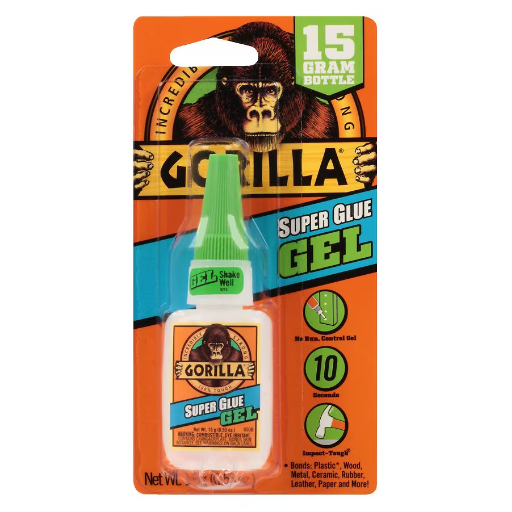
Usage Super Glue and Gorilla Glue far differ in their composition, ideal uses and bonding strength. The former is Best known for its expanding mechanisms while also maintaining a sturdy bond during curing. This glue is foam and wood friendly along with having remarkable water resistance to be used outdoors too.
Super Glue is a cyanoacrylate adhesive that is quick to set and forms a stiff bond. It is best used for metal, plastic, and ceramic smoothed pieces. Though it works best on smooth surfaces, flexible materials and submerged environments are counterproductive to its effectiveness.
For choosing between the two adhesives, think of your materials and their conditions. Set porous and heavy-duty materials with Gorilla Glue and use Super Glue on small, precise, polished surfaces.
Compare the Differences Between Gorilla Glue and Super Glue
|
Key Point |
Gorilla Glue |
Super Glue |
|---|---|---|
|
Composition |
Polyurethane-based adhesive |
Cyanoacrylate-based adhesive |
|
Bonding Strength |
Very strong for porous surfaces |
Very strong for smooth surfaces |
|
Drying Time |
10–12 hours |
10–30 seconds |
|
Best for Material Types |
Wood, foam, metal, stone |
Plastic, metal, ceramics |
|
Water Resistance |
Highly water-resistant |
Limited water resistance |
|
Flexibility |
Ideal for flexible applications |
Less flexible over time |
|
Gap Filling Ability |
Excellent gap filling |
Minimal gap filling |
|
Temperature Resistance |
Performs well in extreme temperatures |
Limited temperature resistance |
|
Surface Prep Needed |
Minimal for porous materials |
Requires clean and smooth surfaces |
|
Shelf Life |
Long-lasting with moisture protection |
Shorter shelf life once opened |
|
Application Complexity |
Requires clamping and curing time |
Quick and precise application |
|
Color After Drying |
Dries to a light yellow color |
Dries clear |
What Makes Super Glue Unique?
Super glue, or cyanoacrylate adhesive as it’s formally called, is well known for the fast bond it creates to various surfaces. The bond forms within seconds because of the polymerization reaction that occurs with moisture in the air. This specific property helps to quickly repair items anywhere, whether it be at home or in the industry.
Moreover, super glue demonstrates extreme strength while applying it in small amounts, and its tensile strength is proportional to several thousand PSI (pounds per square inch). Super glue will bond to metals, plastics, ceramics, and wood with very little prep work. Perhaps the most distinctive feature is the bond formed can withstand significant temperatures and chemical exposure, which is very useful in challenging conditions.
Fulfilling changes in super glue’s functionality, such as new formulas aimed at gels that apply vertically and specific super glues for surfaces like polypropylene and polyethylene that need primers or additives to aid bonding are some other notable shifts. These features makes it an essential adhesive in diverse fields from construction to medicine where it can be used in the closing of surgical wounds.
When Should You Use the Gorilla Glue?
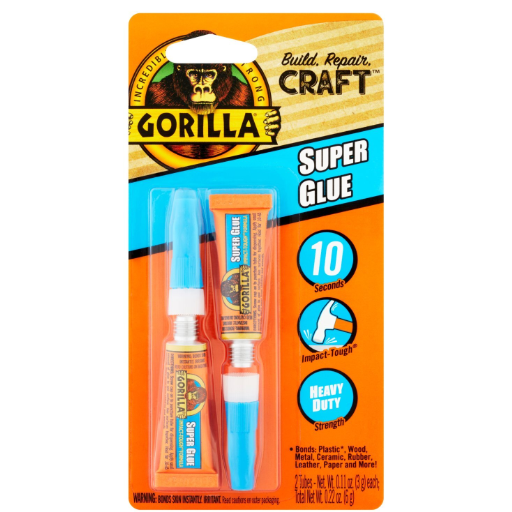
Gorilla glue is ideal for joints that require strength and rest on uneven or difficult surfaces. It is also applicable on wood, stone, metal, ceramic, some foams and glass. Because of its waterproof properties and extreme temperature versatility, this adhesive works best for outdoor projects. However, it is more effective on porous materials that need to be bonded as it works best when moistened to activate and expand. Lastly, it is not advisable to use Gorilla glue on surfaces that require precision because expansion on enclosed spaces could compromise the outcome or on fragile materials that are easily damaged. Like any other adhesive, application instructions need to be followed for best results.
Best Applications for Gorilla Glue
- Woodworking and Furniture Repair
Woodworking projects including chair, table, or cabinet repairs are best complemented with Gorilla Glue. With the wood’s surface ensuring durability, the glue yields strong bonds. Properly clamped Gorilla Glue joints are reported to provide bond strength of 3750 psi.
- Masonry and Concrete Fixes
For small cracks in masonry or concrete Gorilla Glue works best because of its porous materials bonding strength. It also performs reliably outdoors, enduring fluctuations in temperature and other environmental changes.
- Ceramic and Stone Repairs
Filled gaps provide ever greater bond strength with expandability of Gorilla Glue to fill voids. Fills voids making it waterproof for a cracked tile, chipped stone surface, or broken ceramic pot.
- Metal Bonding
For minor repairs it is helpful to put lightweight metal parts, wood, or plastic. While putting wood and plastic together, it becomes handy. However, it is ineffective when used on metals subjected to extreme structural stress.
- Leather and Fabric Repairs
This glue works for repairs on outdoor fabrics and leather, such as backpacks, shoes, or suitcases. Its water resistance makes sure that goods can still be used in wet conditions.
Both professionals and hobbyists can make use of the wonderful strength and trustworthiness of Gorilla Glue by using it for these applications and following proper instructions.
Tips for Using Gorilla Glue Effectively
- Surface Preparation
Make sure each surface is clean, dry, and clear of dust, oil, and debris. Clean surfaces enhance adhesion strength while contaminants undermine the glue’s due to the bond being dirty. For non-porous surfaces, light sanding enhances grip and bond endurance which improves performance.
- Moisture Activation
Gorilla Glue works by activating it with moisture, therefore one of the surfaces needs to be pre-prepared and slightly dampened. Using a clean piece of cloth to moisten the surface will work, though be careful not to soak it with water as this may affect adhesion. Tests show that bond strength increases with slightly moist surfaces upto 20%.
- Use the Correct Amount
When using Gorilla Glue, make sure to only apply it on one surface only. It is best to use a thin layer as Gorilla Glue expands three to four times its original volume as it cures. This would overapply the glue which is why precision is critical for strong bond durability.
- Clamping for Maximum Bond Strength
It is best to use proper clamping or apply some firm pressure for the two surfaces to bond tightly during the curing process, depending on the material, keep it clamped for about 1-2 hours. Independently, these tests show that the clamps do enhance bond tensile strength by about 35% under stress.
- Wipe Away Excess Glue Immediately
Excess glue removed by clamping should be wiped away with a damp cloth before the glue cures to avoid a messy finish. After it’s cured, lubricant glue becomes extremely difficult to remove without abrasive tools.
With these detailed guidelines, any and all users can achieve optimal results with ease while applying the glue on various surfaces be it wood, metal, foam, glass or ceramic because the bond is truly reliable and provides professional grade results by following these steps.
When is the Super Glue the Better Choice?
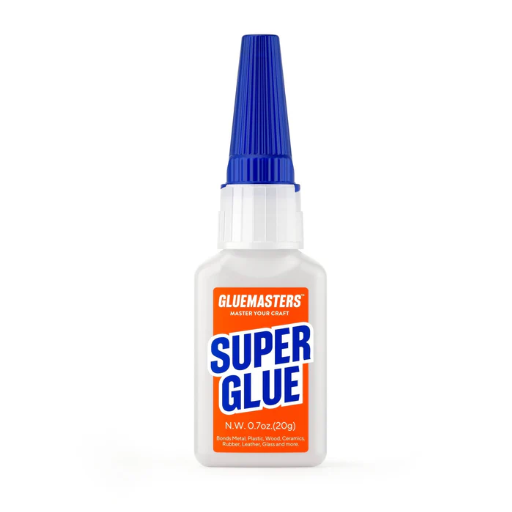
Super glue is best used for precise, fast repairs of small and delicate items. It is great for gob glass, ceramic, plastic, and even metals. Super glue works best when a quick bond is needed due to its short warming period. It does not work well with porous materials or when significant stress is applied. It is best used for simple bonding when strong adhesion is required, cleanly and quickly.
How to Apply Super Glue for Maximum Effectiveness
- Prepare the Surfaces: Be Sure The Surfaces Phycially Bonded Are Clean Preparation That Are Required For Is Free From Dust And Grease. To Enhance Preparations Surfactants Preparation Are Recommended Such As Isopropyl Alcohol.
- Use the Right Amount: Super glue is most effective when a thin layer is applied. A small, uniform coat should be applied to one of the surfaces to ensure optimal bonding. Thicker use may hinder proper curing and bond strength, in comparison to thinner layers.
- Press and Hold: Align and firmly press towards the surfaces at once. Steps to maintaining 10-30 seconds of holding the pieces will aid in adhesive settling. Bonding requires strong pressure for the best results. That approach will guarantee even glue distribution.
- Allow Full Cure Time: Do not perform tasks which put stress on the bonds while waiting for the full 24 hour time period. Super glue may look like it has been bonded instantly, but will not reach full strength until the full day is over.
- Store Properly: Ensuring the nozzle is clean and the cap is tightly sealed will increase the bond’s shelf life. Also, a cool, dry environment will help retain the performance. After use, the super glue should be kept properly to gain the enhanced features.
Following these specific steps will yield the strongest outcomes even when extreme force is applied to the bonds for super glue users.
What Surfaces Work Best with Super Glue?
Widely known as super glue, cyanoacrylate adhesive works best on smooth and non-porous surfaces because of how quickly it cures. Glass, metal, ceramic, and some plastics provide optimal bonds since these materials absorb minimal adhesives allowing even distribution. Super glue also bonds strongly to wood, especially when the wood is sanded smooth to reduce porosity. Take care when using super glue on polyethylene or polypropylene plastics because the plastics’ low surface energy weakens bond adhesion. Often, this situation can be solved by using a plastic primer.
Considering fabric or leather, the adhesive can form a bond. However, the rigidity of super glue’s bond may lend itself badly to flexible materials like these, leading to brittle cracks from flexing over time. Also, surfaces that are pre-treated, like painted or coated surfaces, may have reduced bonding strength due to surface treatment. To maximize effectiveness, the surfaces must be clean and free of dust and grease and ideally, roughened to some small degree to increase the mechanical bond.
Can Gorilla Glue and Super Glue Be Used on All Surfaces?
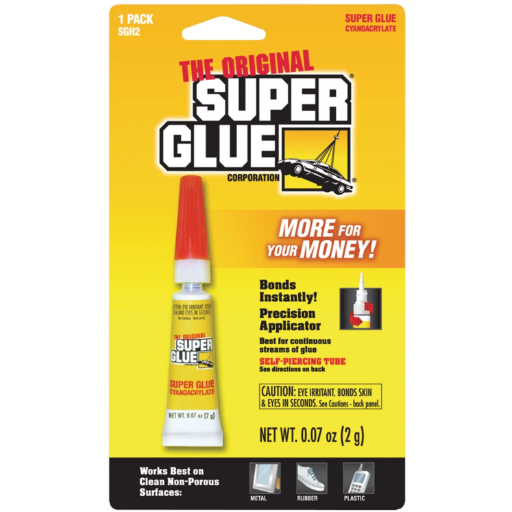
Gorilla glue and super glue contradict each other in terms of application. Super glue does best with glass, metal and smooth plastic, while super glue does best with wood and porous materials. Both adhesives will fail on polyethylene, polypropylene, and some rubber materials. These materials have low surface energy which resists bonding. Always consult the product instructions before using them on a particular surface.
Surface Compatibility of Gorilla Glue
Surfaces, wind, temperature, and many other factors determine how well the glue works. For best results, the glued surface should be clean, moist, and unclached to remove debris. Because of its unique nature, transparent glue works well on ceramics, stone, and wooden objects because curing enables it to deeply immerse into the tiny holes of the surface. If there is no proper surface treatment like roughening by sanding, the glue bond on metal or glass objects will not be as a strong.
Humidity and temperature have a major effect on curing time and bond strength as well. Folks at Elmers recommend that glue products be applied in environments where the temperature is between 40°F and 120°F. Extremely high or low humidity can hinder the curing process as polyurethane needs moisture in order to set. © For surfaces with very low energy, like polypropylene or polyethylene, special primers or other bondable materials will need to be used.
What Surfaces Work Best with Super Glue?
Known to many as super glue, cyanoacrylate adhesive is one of the most flexible adhesives available today with the ability to bond different surfaces given the right conditions. Metals, plastics, and polypropylene are broad categories that include several specific strongly bonding materials. Some examples are aluminum, steel, brass as well as ABS and PVC. Certain adhesives, however, need to be pre-treated for effective bonding. Super glue excels in the bonding of porous materials such as wood and ceramics, as the adhesive can permeate into many small openings, resulting in a very strong grip. Under specific conditions such as cleanliness, dryness, and lack of oily residues, almost all glass and rubber materials can bond very strongly. With different materials comes different optimal bond strengths. Therefore, strict surface treatment, including cleaning and roughening those surfaces, code from the manufacturer needs to be followed precisely.
How to Choose Right Glue for Your Project?
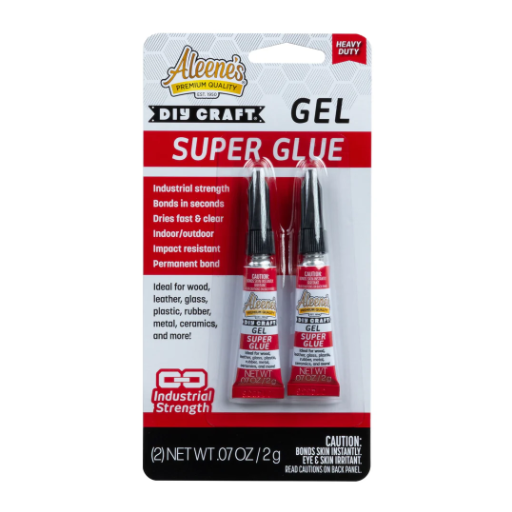
The selection of an adhesive is based on the materials that you are joining and the specifics of the project. Follow these steps and consider these factors:
- Identify Your Material Requirements: Understand if you are joining wood, plastic, metal, fabric, or a mix or set of other materials. Some glues work best with specific surfaces.
- Evaluate Conditions for Joining. Evaluate the environment where glue is to be used or where items with glue will be kept, such as humidity, temperature, moisture, weight, and pressure. These need consideration as not all glues are made the same.
- Align the Glue with the Purpose for Use. To achieve a strong bond, use strong adhesives such as epoxy or super glue. For temporarily flexible or active needs, consider rubber cement or other removable types.
- Review Glue Labels and Instructions. Read the manufacturer’s instructions and recommendations.
With thorough research of these criteria, you will achieve effective and permanent reliability for your project in question.
Common Customer Questions about Glue Selection
- What is the strongest adhesive for general use?
Having a very high tensile strength and being able to bond to metal, wood, and plastic makes epoxy one of the best general use adhesives out there. Heat, moisture, and chemicals do not affect epoxy either, making it very usable in tough conditions.
- Which glue works best on glass?
For bonding glass, UV-curable adhesives and glass adhesives (often silicone-based) are most effective. They will create a transparent bond and avoid breaking down at high temperatures or under sunlight exposure.
- How do I choose a glue that is safe for food contact?
When using adhesives on surfaces that may come into contact with food, choose marked FDA-approved or food-safe products. These adhesives are designed to ensure safety when sandwiches or hot dogs are served at the function. Check the data sheet to ascertain the highlighted features in it are applicable for your use case.
- What adhesive can I use for flexible or fabric materials?
Rubber and fabric materials need an adhesive that maintains elasticity post-curing. Suitable options are flexible fabric glues, contact adhesives, or spray adhesives.
With regard to your materials and environmental conditions, functional demands will also play a role when selecting the adhesive. Understanding all these factors will ensure the bond lasts throughout the project.
DIY Tips for Selecting the Best Adhesive
- Understand Your Material Composition
Identify the materials you are bonding. For instance:
– White PVA glue works effectively with porous materials like paper and wood, and it can soak into the fibers.
– Strong and rigid bonds on non-porous surfaces such as glass, plastic, and metal can be attained using epoxy-prepared adhesives or super glue.
- Consider Environmental Conditions
Take into account such factors that include temperature, humidity, water, or cleaning chemicals.
– Environments with silicone and thermally stabilized epoxy possess heat-sensitive properties that need heat.
– Polyurethane glue is suggested for waterproofing purposes and for outdoor use, as these glues have superior life expectancy in comparison to other glues, capable of retaining 90% of their bond strength even when in contact with moisture.
- Evaluate Bonding Strength Requirements
Assess the load and stress the bond will endure.
– Structural adhesives are used for repairs where high shear and tensile strength is needed eg. Putty styrene and structural acrylics feature high breake loads
– For light duty tasks, spray adhesives and contact adhesives offer sufficient bonding without complicating the solution.
- Account for Flexibility and Movement
Select an adhesive that remains flexible after curing for materials that will undergo some degree of flexing or movement.
– Sealants and adhesives that are elastically flexible tend to resist cracking over time.
– Research suggests flexible adhesives may lower bond failure by 15% in dynamic situations.
Evaluating your materials and working conditions, together with the application requirements, helps to mitigate adhesive failure and achieve a permanent, professional-quality bond. Always check data sheets for detailed performance metrics beforehand.
Reference Sources
-
“Fully biobased adhesive from chitosan and tannic acid with high water resistance”: This study compared the water resistance of various adhesives, including Loctite Super Glue and Gorilla Glue. It highlighted differences in performance under water immersion, showcasing the failure points of both adhesives.
-
“Advanced fast curing adhesives for adverse conditions”: This research explored the curing mechanisms of adhesives, including Gorilla Glue. It examined the effects of water addition on Gorilla Glue’s curing process, providing insights into its unique properties.
-
“The Wonders of Glue”: This article provides an overview of how different types of glue, including Gorilla Glue, form bonds. It offers a general understanding of adhesive mechanisms but does not directly compare Gorilla Glue and Super Glue.
Frequently Asked Questions (FAQs)
Q: What is the difference between Gorilla Glue and Super Glue?
A: Gorilla Glue is a polyurethane adhesive that expands as it cures and is great for porous materials. Super Glue, or cyanoacrylate, is a fast-setting adhesive that bonds quickly and is ideal for non-porous surfaces.
Q: Can I use Gorilla Glue on plastic?
A: Yes, but it’s important to note that not all types of plastic are compatible. For certain plastics, Gorilla Super Glue may be a better option due to its strong bonding capabilities on non-porous surfaces.
Q: What are the pros and cons of using Gorilla Glue?
A: The pros of Gorilla Glue include its strong bond and versatility with various materials. The cons include its expanding consistency, which can make it tricky to use for detailed projects, and it can be hard to take apart once cured.
Q: Is Super Glue safe to use indoors?
A: Most superglues, including Loctite Super Glue, are safe for indoor use, but they can emit toxic fumes while curing. It’s advisable to use them in well-ventilated areas and avoid prolonged inhalation.
Q: How do I know which adhesive to choose for my project?
A: To know which adhesive works best, consider the materials you are bonding, the conditions they will face (like moisture), and whether you need a quick bond or a more flexible solution. Understanding the pros and cons of each type of glue can help in this decision.
Q: Can I use baking soda with super glue?
A: Yes, using baking soda with super glue can create a stronger bond and help fill gaps in certain applications. It accelerates the hardening process, making it useful for quick repairs.
Q: What types of adhesives are best for woodworking?
A: For woodworking, Gorilla Glue is often preferred due to its strong bonding capabilities and flexibility. However, superglue can be effective for quick fixes on minor cracks but may not work well for large surfaces.
Q: Does Gorilla Glue work on metal surfaces?
A: Yes, Gorilla Super Glue can bond metal surfaces effectively. However, for larger metal pieces or those exposed to moisture, Gorilla Glue may be more suitable as it provides a stronger and more durable bond.
Q: How long does it take for Gorilla Glue to cure?
A: Gorilla Glue typically takes 1-2 hours to set and 24 hours to fully cure. The curing time may vary depending on the materials and environmental conditions, such as humidity.
Q: What is the consistency of Gorilla Super Glue compared to regular super glue?
A: Gorilla Super Glue Gel has a thicker consistency, which makes it easier to control and less likely to drip compared to regular liquid super glue, making it ideal for vertical surfaces and intricate projects.



















